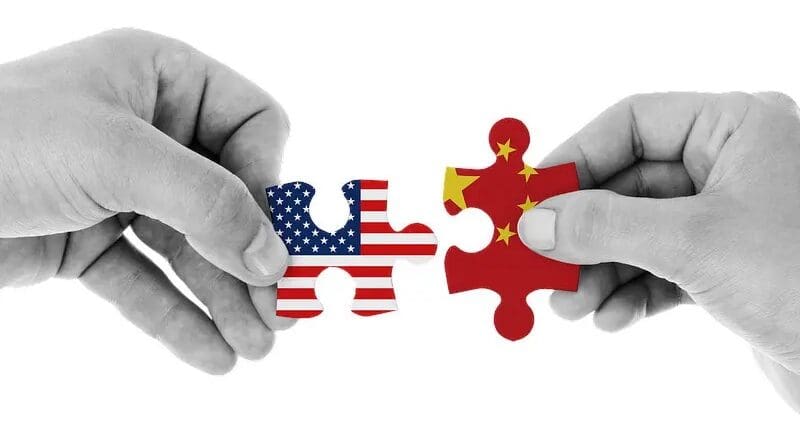Chinese Version Of Strategic Technological Commodities And Export Control Restrictions – OpEd
The trade war between China and the United States that started in 2018 is moving forward in full swing under the Biden administration. But the contours of strategic competition have shifted from geo-economics to the technological domain given the significance of Fourth Industrial Revolution technologies in economic and military modernization.
The Biden administration continued the legacy of Trump and imposed additional export control restrictions on China in October 2022 last year. The restrictions held the US-based companies and allies from exporting US-originated high-tech software, equipment, and semiconductors to China. Through the export control restrictions, high-end semiconductor is utilized as strategic resources to contain Chinese advancements in AI technologies. The objective of these regulations is to slow down Chinese advancements in the Chip industry that will ultimately enable it to surpass the US in military, commercial, and technological advancements, given their application in AI, Machine learning, weapons, and supercomputers. In the longer run, it will enable China to modernize its economy and military to shape the norms of global governance.
Likewise, the US allies in the high-tech industry since then joined together in their effort to hamper China’s tech advancements. Japan’s export control restrictions and government funding of 6.3 billion dollars are aimed at building a domestic industrial base. Italy also imposed restrictions on Sinochem to block its access to sensitive technology.
Similarly, the Dutch government issued restrictions on ASML for product licenses used in chip-making. Consequently, Chinese manufacturers embarked on expanding innovation in those technologies that are least targeted by export control regulations posed by US such as memory chips. China alleged that the US is abusing export measures that will ultimately impact international trade. It filed a lawsuit at WTO in December 2022 to resolve the dispute legally. The US responded by stating that it was not the right platform to resolve the national security issue.
Priorly, China sought WTO dispute resolution after the Trump Administration imposed tariffs on steel and aluminium in 2018. The response from the WTO came in December 2022 which rejected the US-imposed tariffs by favouring China. This reflects that it take years to resolve disputes through the WTO platform and the limited cards that China holds in its baskets.
As a consequence, the Chinese Ministry of Commerce issued a statement indicating export control restrictions on Gallium and Germanium and the products made from these materials from 1st August. The move can be translated as China’s attempt to come up with its version of strategic technological commodities that cannot be exported outside the state without directives and special permission from the Chinese government. The raw materials are significant in their utilization in electric vehicles, chip-making, solar panels, and high-tech industries. Around 60% of world’s germanium and 80% of Gallium are produced in China, according to the Critical Raw Material Alliance. Chinese customs declared that 43 metric tons of germanium were sold in the year 2022. The US geological survey highlighted that China is the largest producer of these two raw materials with Japan, Russia, and South Africa together producing 10,000 metric tons of gallium. Canada’s Teck resources and US-based Indium cooperation also produce germanium but despite holding a significant share of the world’s germanium mines, US does not exploit them.
The impact of the restriction on the export of gallium and germanium will be evident in the supply chain disruption due to rising demands for raw materials and an increase in the cost of semiconductors that utilize germanium and gallium in the short term. The China-based germanium producers such as Yunnan Lincang Xinyuan Germanium Industrial and Yunnan Chihong Zinc & Germanium saw a 10% and 6.1% hike in prices of their shares due to soaring prices of these raw materials. The move aims to slow down the high-tech sector of nations involved in export control restrictions in collaboration with the US against China. Wafer manufacturer AXT- a semiconductor company based in the US- applied for a permit after China announced new restrictions on 3rd July. Other semiconductor and chip manufacturing companies rushed to secure the supplies and also raised apprehension on challenges to cater to market demands in the absence of raw material supplies from China.
China is hitting the root of the technological supply chain through export curbs. The measures taken by Beijing are significant to affirm to the world that it can maintain its position in the Chip War. The Chinese version of export control restrictions is a lesson for the US and its allies that setting China aside from the high-tech supply chain is not easy. Given the low cost for China-oriented gallium and germanium export and the high cost associated with extracting these raw materials and attaining self sufficiency, China is fully utilizing its competitive advantage like the US exploiting its edge in semiconductor technology. China understands that currently the world relies on materials exported by Beijing and it requires a great deal of time to diversify the supply chain which gives it a leverage to counter US-led export restrictions under the national security narrative.

